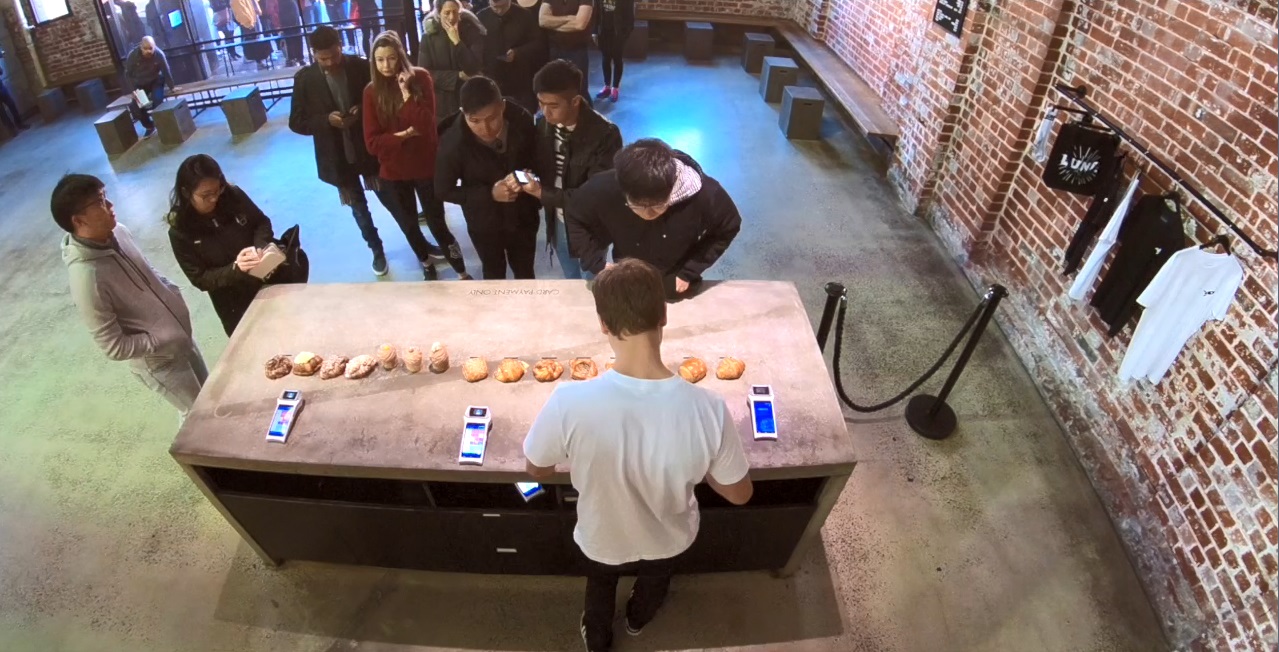-
The use of cash is dropping – which won’t surprise all those people already tapping and going or using direct payments or even plastic cards.
According to statistics from the Reserve Bank of Australia, use of cash for consumer purchases dropped 32 per cent to 37 per cent between 2007 and 2017.
"If we went cashless we could save money and improve customer experience.” – Kate Reid
For one Melbourne business then, going cashless was a no-brainer.
“We did a study on how many customers were actually paying with cash and we found 90 per cent paid card anyway,” Cam Reid, co-owner of cult Melbourne pastry provedore Lune Croissanterie tells bluenotes.
Originally set up by his sister Kate, Lune is now five years old but along with growing their business, Kate and Cam have been constantly seeking to improve its efficiency – an approach which may reflect Kate’s background.
As a child, Kate never intended to be selling croissants for a living. “I'd wanted to be a Formula One engineer for as long as I can remember but when I got there it wasn't exactly what I expected,” she says.
After three years as an aerodynamicist in F1, Kate made the decision to search for something else. “My work had taken me into France a lot and the thing I’d looked forward to the most was having breakfast – specifically croissants.”
Kate undertook an apprenticeship with award-winning baker Christophe Vasseur before returning to Australia to open a wholesale croissanterie.
{CF_VIDEO}
Fast forward to 2018, Kate and Cam are now running the wildly popular Lune which has locals and tourists queuing for hours on the weekend to enjoy their creations.
The pair have a keen focus on innovation and continuous improvement and say the idea of ditching cash made a lot of sense to help improve bottlenecks and eliminate bacteria from transactions.
“We wanted to try speeding up [the purchasing] process - even if it's only five or 10 seconds for every customer that will improve the experience for everyone in the line,” says Cam.
{CF_IMAGE}
Cam also says going cashless makes it easier to report their finances to bookkeepers and the Australian Tax Office.
“Whatever happens on the till - that's what happened. We're really trying to operate 100 per cent above the line and be a clean example of a business,” he says.
However the switch to cashless took more effort than simply ditching notes and coins. The business took on a new point-of-sale (POS) system and changed the way their day-to-day business ran, using ANZ’s BladePay and POS partner Abacus.
ANZ Strategic Partnerships Manager Joash Lawton and team worked with Kate and Cam for over 12 months to implement the new system.
“If you ask Cameron or Kate now, [it has] added so much value and it was worth going through a period of learning something new,” Lawton says.
{CF_IMAGE}
For Kate and Cam, the savings from going cashless were instant: “we knew we were paying a staff member up to maybe 10 hours a week to do things like go down to the bank, pick up change, bank the day's takings and count the cash at the end of the day,” says Kate. “If we went cashless we could save that money and improve the customer experience.”
The duo knew the move had to be a positive change for both the business and customers.
“We wouldn't have done it if it was good for us but not the customers or vice versa,” Kate emphasises.
Lawton says the move to cashless is definitely consumer-driven with products like Apple Pay and digital wallets making it easy for customers to make payments on the go.
“Customers are becoming more comfortable without cash in their wallet,” he says.
For Lune, as the business continues to expand, counting and carrying cash is one less thing to worry about.
Jemma Wight is production editor at bluenotes
The views and opinions expressed in this communication are those of the author and may not necessarily state or reflect those of ANZ.
-
-
-
anzcomau:Bluenotes/business-finance,anzcomau:Bluenotes/Payments,anzcomau:Bluenotes/Disruption,anzcomau:Bluenotes/Small-business
Lune: the cashless croissanterie
2018-10-01
/content/dam/anzcomau/bluenotes/images/articles/2018/October/WightLune_banner.jpg
EDITOR'S PICKS
-
Much has been written about Australia’s move to a cashless society, do the numbers really stack up?
26 June 2018 -
Since the emergence of homo-sapiens more than 2000 years ago, humans have used different forms of money, both as a means of exchange and as a store of value. Despite the advent of internet banking and the various types of non-cash payment option, cash is still an omnipresent feature in most people’s purse or wallet.
13 March 2014


